Egypt’s rich cultural history is not limited to its ancient pyramids and pharaohs; it also extends deeply into Christianity through its historic Coptic churches. The Coptic Orthodox Church is one of the oldest Christian denominations, with roots stretching back to the 1st century AD. Visiting Egypt’s Coptic churches offers a unique chance to explore the world’s earliest Christian communities, witness sacred rituals, and experience the beautiful architecture that blends Egyptian, Byzantine, and Christian influences. Whether you’re a history enthusiast, a spiritual seeker, or simply a lover of art, Egypt’s Coptic churches promise an unforgettable experience. Here’s what to expect when visiting these remarkable places of worship.
- Egypt Tour Magic
- Egypt Tour Packages
- Excursions in Egypt
- Cairo Tours and Excursions
- Hurghada Tours and Excursions
- Soma Bay Tours and Excursions
- Makadi Bay Tours and Excursions
- Sahl Hasheesh Tours and Excursions
- El Gouna Tours and Excursions
- Marsa Alam Tours and Excursions
- Port Ghalib Tours and Excursions
- El Quseir Tours and Excursions
- Dendera and Abydos Day Tours
- Aswan Tours and Excursions
- Luxor Tours and Excursions
- Alexandria Tours and Excursions
- Sharm El Sheikh Tours and Excursions
- Top Rated Tours in 2025
- Optional Excursions in Egypt
- Private Transfer
- Blogs About egypt
- Ancient Egypt
- What You Need To know Before Your First Trip To Egypt
- Best Places to Visit in Egypt 2025
- Top Attractions in Red Sea Resorts 2025
- Top 10 Tourist Activities in Egypt
- Top 30 Activities You Can’t Miss in Egypt
- The Guide to Guided Tours in Egypt
- Egypt’s Ancient and Modern History
- The Nile River
- The Deserts of Egypt
- Historical Sites in Egypt
- Cairo
- Alexandria
- Luxor
- Aswan
- The Red Sea
- Dendera Temple
- El Fayoum Oasis
- Bahariya Oasis
- Siwa Oasis
- Al Alamein
- Marsa Matruh
- Ancient Egyptian gods
- famous Egyptian dishes
- UNESCO World Heritage sites
- About Us
- Why Egypt Tour Magic
- Egypt Tour Magic
- Egypt Tour Packages
- Excursions in Egypt
- Cairo Tours and Excursions
- Hurghada Tours and Excursions
- Soma Bay Tours and Excursions
- Makadi Bay Tours and Excursions
- Sahl Hasheesh Tours and Excursions
- El Gouna Tours and Excursions
- Marsa Alam Tours and Excursions
- Port Ghalib Tours and Excursions
- El Quseir Tours and Excursions
- Dendera and Abydos Day Tours
- Aswan Tours and Excursions
- Luxor Tours and Excursions
- Alexandria Tours and Excursions
- Sharm El Sheikh Tours and Excursions
- Top Rated Tours in 2025
- Optional Excursions in Egypt
- Private Transfer
- Blogs About egypt
- Ancient Egypt
- What You Need To know Before Your First Trip To Egypt
- Best Places to Visit in Egypt 2025
- Top Attractions in Red Sea Resorts 2025
- Top 10 Tourist Activities in Egypt
- Top 30 Activities You Can’t Miss in Egypt
- The Guide to Guided Tours in Egypt
- Egypt’s Ancient and Modern History
- The Nile River
- The Deserts of Egypt
- Historical Sites in Egypt
- Cairo
- Alexandria
- Luxor
- Aswan
- The Red Sea
- Dendera Temple
- El Fayoum Oasis
- Bahariya Oasis
- Siwa Oasis
- Al Alamein
- Marsa Matruh
- Ancient Egyptian gods
- famous Egyptian dishes
- UNESCO World Heritage sites
- About Us
- Why Egypt Tour Magic
Historic Coptic Churches
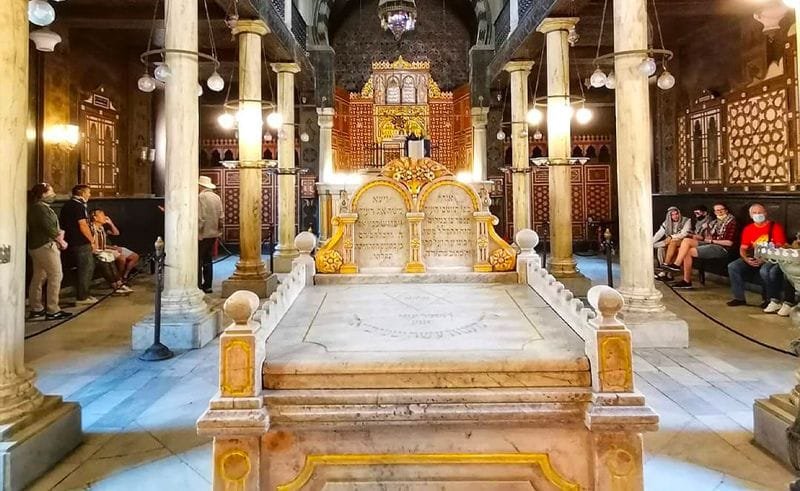
1. A Glimpse into Ancient Christianity
Egypt's Coptic Orthodox Church holds the distinction of being one of the oldest Christian denominations in the world, with its roots tracing back to the first century AD. Founded by Saint Mark the Evangelist, the Coptic Church has been a central part of Egypt’s religious fabric for nearly two millennia. When visiting Egypt’s Coptic churches, you'll be stepping into living testaments of this ancient Christian heritage. These churches, many of which date back to the 4th and 5th centuries, preserve sacred relics, ancient manuscripts, and icons that offer a direct connection to the earliest Christian communities. The Coptic faith, deeply intertwined with Egypt’s history, has managed to survive numerous challenges, including invasions and political changes, and remains a vital force in the spiritual and cultural life of the country. The walls of these churches often house murals and frescoes depicting Biblical scenes, such as the life of Christ and the Virgin Mary, which convey theological teachings through vivid imagery. The distinctive Coptic art style—characterized by vibrant colors, flat depictions of saints, and symbolic imagery—further enhances the historical experience. For instance, the Hanging Church in Cairo features murals that go back centuries and reflect the rich cultural exchange between the early Christian community in Egypt and other parts of the Mediterranean. Additionally, many Coptic churches are built upon sites believed to be of great significance to Christian history, including those associated with the Holy Family’s journey through Egypt. A visit to these churches gives you a direct encounter with the past, allowing you to explore the deep spiritual and historical roots of Christianity in Egypt and its profound influence on the Egyptian people and culture.
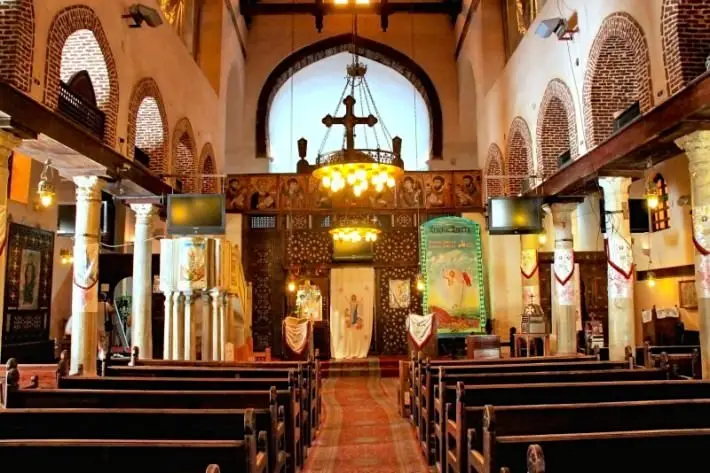
2. The Architecture: A Blend of Egyptian, Byzantine, and Coptic Styles
The architecture of Egypt’s Coptic churches is a fascinating fusion of Egyptian, Byzantine, and Coptic Christian styles. The early Coptic church architects were influenced by the grandeur of ancient Egyptian temples, as well as the artistic and architectural traditions of the Byzantine Empire, resulting in structures that are both historically rich and spiritually significant. Coptic church design typically emphasizes the importance of space as a way to foster a sense of awe and reverence among worshippers. The grand, vaulted ceilings, large stone columns, and expansive prayer halls are reminiscent of ancient Egyptian temples, where the grandeur of architecture was designed to reflect divine power. In these churches, you’ll find columns that resemble those seen in the temples of Luxor or Karnak, suggesting the deep connection between Coptic Christianity and Egypt's ancient past. The influence of Byzantine architecture can be seen in the intricately carved iconostases (wooden screens separating the altar from the congregation), and in the rich use of mosaics and frescoes that adorn the walls of these sacred spaces. The Hanging Church in Cairo, for example, features stunning wooden ceilings and an intricate wood-carved screen that separates the altar from the rest of the church, exemplifying both Coptic and Byzantine design elements. Many Coptic churches also include domed roofs, a feature inspired by Byzantine religious architecture, intended to symbolize the heavens and bring the worshippers closer to the divine. The use of light in Coptic churches—through narrow windows and skylights—is designed to create a sacred atmosphere, filtering sunlight into the interior in a way that evokes a sense of divine presence. Overall, the architectural beauty of Egypt’s Coptic churches reflects a harmonious blend of ancient Egyptian heritage and early Christian religious practices, offering visitors both aesthetic beauty and spiritual significance.
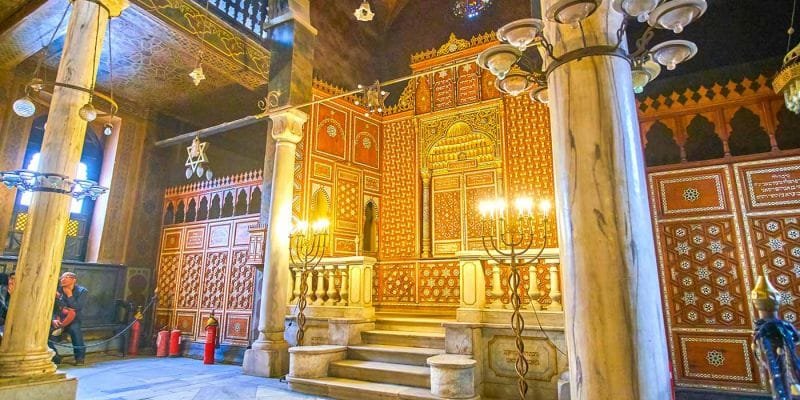
3. Peaceful Atmosphere and Spiritual Significance
The atmosphere inside Egypt’s Coptic churches is unlike any other. These sacred spaces exude peace and tranquility, providing visitors with a rare opportunity to escape the bustle of everyday life and immerse themselves in a deeply spiritual environment. The quiet hum of incense filling the air, combined with the soft light filtering through stained glass windows, creates an atmosphere of calmness that encourages reflection and prayer. Unlike typical tourist sites, Coptic churches are places of active worship, where local communities gather to engage in regular liturgical services. These services, characterized by beautiful hymns and solemn rituals, draw worshippers closer to their faith. The rhythms of the chants, accompanied by the melodic sounds of the Coptic liturgy, resonate with centuries of devotion and continue to echo through the walls of these sacred buildings. As a visitor, the peaceful ambiance may inspire you to slow down, reflect, or simply appreciate the profound spiritual significance of these sites. The Coptic faith places a strong emphasis on the role of the church as a sacred space, a place where one can experience a connection to the divine. In addition to the rituals, the serene atmosphere is amplified by the symbolism embedded in the architecture itself—every element, from the placement of candles to the intricacy of the altars, has a deeper meaning tied to faith. Whether you are religious or not, visiting a Coptic church offers a deeply personal experience, as you encounter a living tradition that connects the past with the present. It is not just about appreciating art or history, but about embracing a space where spirituality is at the forefront of human experience.
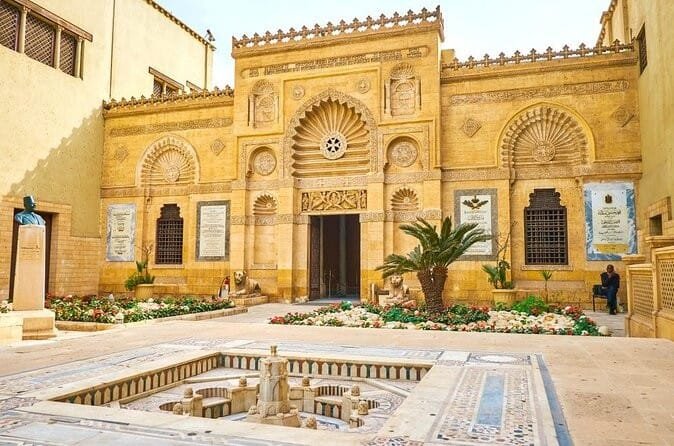
4. Important Historic Churches to Visit
Egypt is home to a wealth of historic Coptic churches, many of which are steeped in religious significance and architectural beauty. Among the most famous is the Hanging Church in Cairo, known for its elevated position above the Roman gatehouse of Babylon Fortress. This church is one of the oldest Coptic Christian churches in Egypt, dating back to the 3rd century, and it remains an active site of worship. Visitors will be captivated by its stunning wooden ceilings, intricate iconostasis, and beautiful frescoes that adorn the walls. Another must-see church is the Saint Sergius and Bacchus Church, believed to be built over the spot where the Holy Family sought refuge during their flight to Egypt. This church’s intimate, narrow interior invites reflection and prayer, and its historical and biblical significance is deeply felt. For those looking to explore the Egyptian countryside, the Monastery of Saint Anthony in the Eastern Desert offers a glimpse into the monastic life that has defined much of Coptic Christianity. Saint Anthony, known as the father of Christian monasticism, founded this monastery in the 4th century. Visitors can marvel at the stunning desert landscape and the peaceful solitude that continues to define monastic life. Similarly, the Monastery of Saint Paul is another ancient site in the Eastern Desert, dating back to the 5th century, with remarkable frescoes and spiritual significance. Further south, the White Monastery and Red Monastery in Sohag stand as masterpieces of Coptic architecture, featuring preserved frescoes and intricate carvings that reflect the beauty of early Christian art. Whether located in bustling Cairo or remote desert regions, these churches and monasteries offer a deep dive into Egypt’s Coptic heritage and an opportunity to witness the spiritual heart of the country.
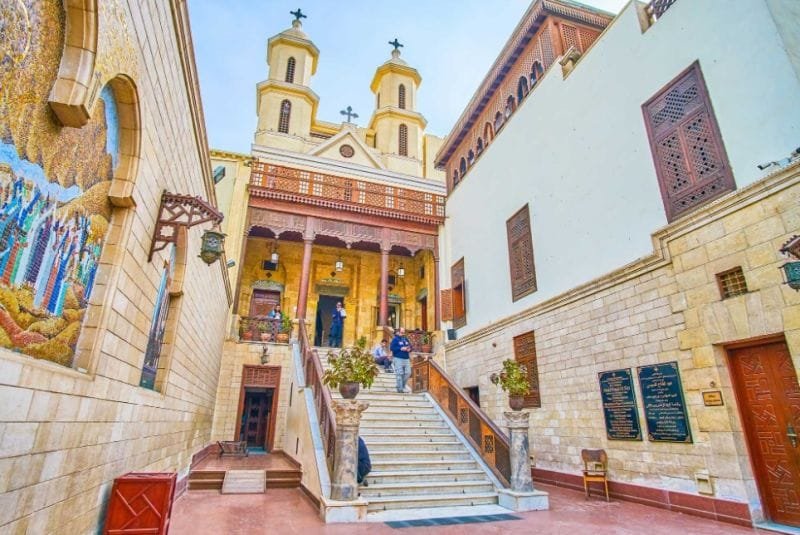
5. The Role of Coptic Churches in Egypt’s Contemporary Culture
The Coptic Orthodox Church continues to play a crucial role in the cultural and religious life of modern Egypt, despite the challenges faced by its community over the centuries. Today, Coptic Christians make up around 10-15% of Egypt’s population, and their religious and cultural influence remains significant. The Coptic Church is not only a place for spiritual nourishment but also a cornerstone of community life. Many Coptic churches in Egypt run schools, orphanages, and hospitals, providing vital services to the broader population. These institutions are deeply integrated into the social fabric of Egyptian society, where they serve as places of charity and care. In terms of religious practice, the Coptic Church adheres to ancient traditions that continue to shape contemporary Egyptian culture. Key religious holidays such as Coptic Christmas (celebrated on January 7) and Coptic Easter are major events in Egypt, with services in Coptic churches attracting large numbers of worshippers. These events are celebrated with much fanfare, including feasts, music, and processions, which are open to both Coptic Christians and the general public. The church also remains a symbol of resilience in the face of political and social challenges. The Coptic community has faced persecution over the years, yet the church has continued to thrive, maintaining its ancient customs and contributing to Egypt's rich mosaic of religious diversity. Visiting a Coptic church today offers an opportunity not only to witness the beauty of Christian traditions but also to gain a deeper understanding of the role of the Coptic Orthodox Church in modern Egyptian society. It’s a living testament to the continuity of ancient faith practices in the modern world.
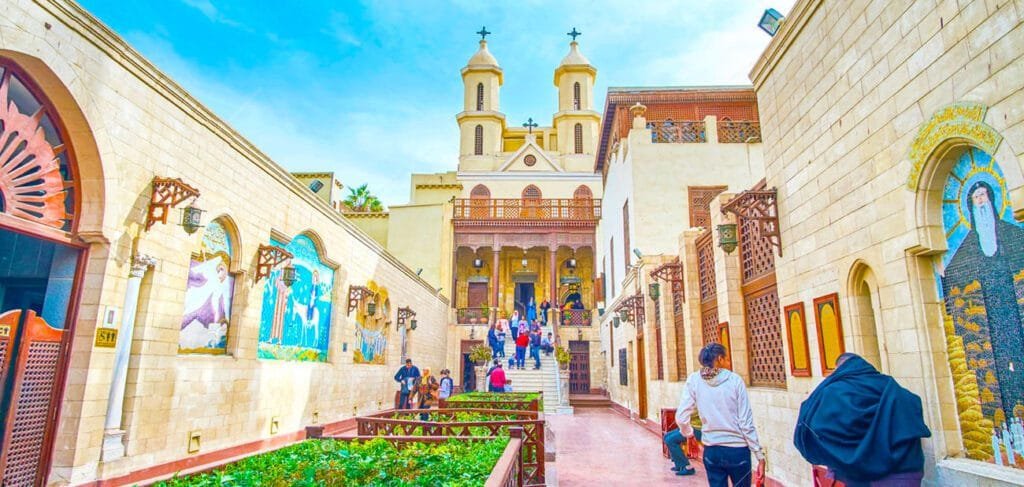
6. Etiquette and Respectful Behavior
When visiting Egypt’s Coptic churches, it’s essential to approach your visit with respect and mindfulness, as these churches are active places of worship. These sites are not tourist attractions in the conventional sense; rather, they are sacred spaces where the Coptic Christian community engages in regular religious services. Therefore, visitors are encouraged to adhere to certain etiquettes to ensure that the sanctity of these spaces is respected. Modest attire is a key aspect of visiting a Coptic church. Both men and women should ensure that their shoulders are covered, and women may be required to wear a headscarf upon entering certain churches. It is recommended to wear long pants or skirts, as shorts are generally considered inappropriate. Additionally, visitors should be mindful of the presence of worshippers who may be engaged in prayer or liturgy. Silence and respect are important, especially during services. If you happen to visit during a church service, try to keep conversations to a minimum and avoid using mobile phones. Photography may be restricted in certain areas, particularly near the altar or in places where sacred relics are displayed. Always ask for permission before taking photos, as this shows respect for the sanctity of the space. Visitors are encouraged to approach the church with an open mind, willing to learn about the rich religious traditions and practices that have shaped the Coptic faith for centuries. The Coptic community is generally welcoming, and many worshippers are eager to share insights into their faith and history with respectful visitors. By adhering to these simple guidelines, you can ensure that your visit is both respectful and enriching.

7. Spiritual and Artistic Inspiration
Egypt’s historic Coptic churches are not only places of worship but also rich sources of artistic and spiritual inspiration. The artwork found inside these churches provides a window into centuries of Christian faith and devotion. Coptic art is characterized by its vibrant, symbolic imagery, which blends Christian iconography with elements of Egypt’s ancient artistic traditions. Iconography plays a significant role in Coptic Christian practice, and the walls of churches are often adorned with striking images of Christ, the Virgin Mary, and the saints. These icons are not just decorative; they are seen as a means of connecting the earthly with the divine. When visiting these churches, the images and frescoes on the walls often tell stories from the Bible, creating a visual narrative that enhances the spiritual experience. The Hanging Church in Cairo, for example, features intricate icons and vivid murals that tell the story of Christian salvation. Beyond the visual arts, the spiritual experience of visiting a Coptic church is equally enriching. The peaceful atmosphere, the soft sound of chants, and the intoxicating smell of incense invite visitors to pause, reflect, and perhaps even experience a sense of spiritual transcendence. For art lovers, history enthusiasts, and spiritual seekers alike, the Coptic churches offer an abundance of inspiration. Whether you are drawn to the artistry of the frescoes or the serenity of the surroundings, these churches provide a unique opportunity to connect with Egypt’s deep spiritual and artistic legacy. Visiting them can be a transformative experience, offering not just a glimpse into the past but also a powerful encounter with the present expression of faith.

8. Coptic Monasteries: A Step Into the Heart of Monastic Life
Coptic monasteries are not only places of worship but also centers of Christian monasticism that have been crucial to the preservation of Coptic traditions and spiritual practices. These monasteries are located in remote areas of Egypt, often in the desert or mountainous regions, providing a serene environment for prayer, contemplation, and spiritual reflection. The Monastery of Saint Anthony, situated in the Red Sea Mountains, is one of the oldest and most significant monasteries in Egypt, founded by Saint Anthony the Great in the 4th century. It offers visitors a unique opportunity to explore monastic life and see firsthand how Coptic monks live and worship. In addition to Saint Anthony’s Monastery, other important sites include the Monastery of Saint Paul and the Monastery of Saint Macarius, both of which are situated in similarly remote, tranquil locations. Visiting these monasteries provides insight into the monastic traditions that have shaped Coptic Christianity over the centuries. Coptic monasteries are known for their austere, simple lifestyle and their focus on prayer, fasting, and spiritual discipline. The architecture of these monasteries is also remarkable, often combining simple designs with intricate iconography and stunning frescoes that illustrate the lives of saints and biblical stories. The role of these monasteries in preserving Christian faith and practice cannot be overstated, as they have acted as sanctuaries of spiritual refuge throughout the ages. For those seeking a deeper understanding of Coptic monasticism and the early roots of Christian ascetic practices, these remote monasteries offer a profound experience and a glimpse into the timeless commitment to faith that still defines many Coptic communities today.

9. The Significance of Coptic Liturgy and Rituals
The Coptic Orthodox Church is renowned for its ancient and distinct liturgy, which remains unchanged for centuries and is an integral part of the worship experience in Egypt’s historic Coptic churches. The Coptic liturgical tradition is deeply symbolic, with every aspect of the service—whether it be the prayers, hymns, or rituals—designed to connect the worshippers with the divine. One of the key elements of the Coptic liturgy is the use of Coptic music and hymns, which are sung in the ancient Coptic language, a direct descendant of the Egyptian language spoken in the time of the Pharaohs. The rich and resonant melodies are often accompanied by incense, a key element that adds a mystical aura to the experience. The Coptic Church also follows a unique sacramental tradition, which includes the Holy Eucharist or communion, an essential ritual where the bread and wine are believed to become the body and blood of Christ. Visitors to Coptic churches can witness the solemnity of this sacrament, which is performed with great reverence and is central to the faith. The Great Fast (Lent) is another important time in the Coptic Church, where worshippers engage in fasting, prayer, and almsgiving as a means of spiritual renewal. The feast days of saints and key events in the life of Christ are marked by special liturgies and processions, drawing large crowds and creating a sense of community and shared faith. For those visiting Egypt’s Coptic churches, participating in or observing these rituals can provide a deeper understanding of the spiritual life of the Coptic Christian community, revealing the central role of tradition and liturgy in connecting with God. These rituals are not only religious practices but also expressions of the deeply rooted identity and continuity of Coptic Christianity.


